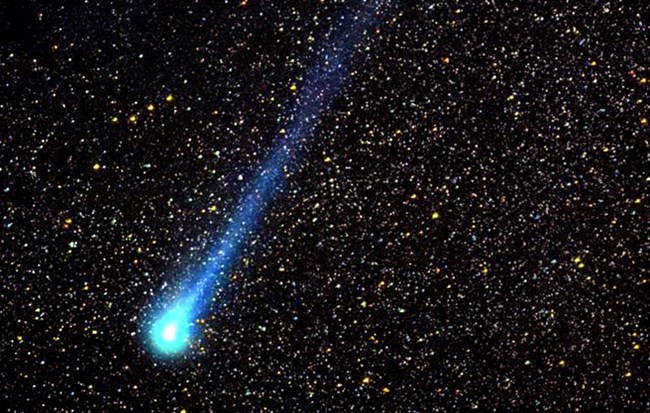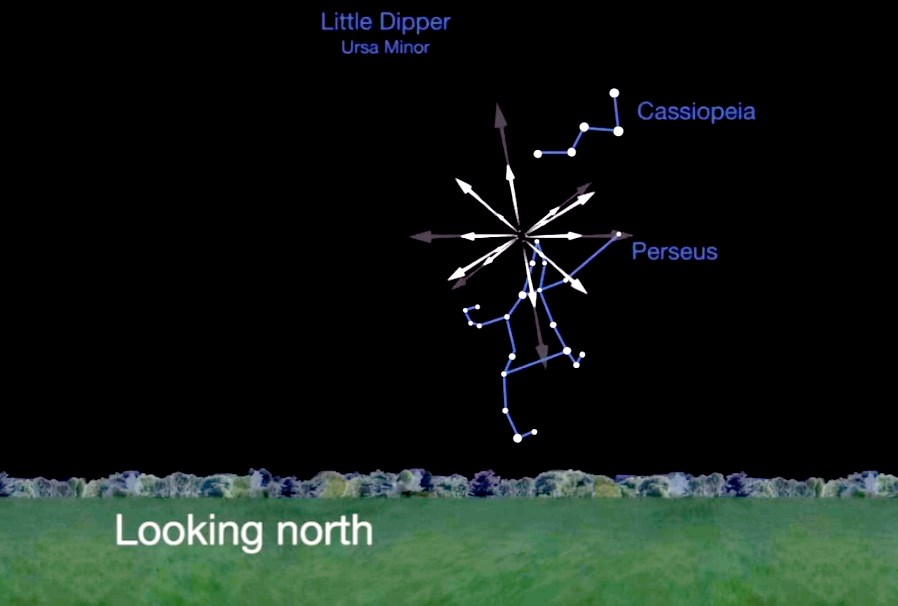Last updated: August 8, 2022
Article
Summer Meteor Showers Animate Night Sky

NASA / JPL
The Perseid meteor showers are nature's fireworks. Every August they animate night skies with a dazzling display of “shooting stars.” Scientists estimate this year's showers to peak August 12-13, 2022, with up to 100 meteors visible per hour in dark locations. Some will blaze as fireballs, emitting light brighter than the planet Venus! National parks are great places to view meteor showers, and many offer night sky programs for park visitors. This year, the timing of the Perseids coincides with a Full Moon, so viewers will need to visit really dark places to see the show. Check out these helpful stargazing tips to make your experience even more memorable.

NASA
What are shooting stars?
Meteors are chunks of ice or rock in space ranging in size from a grain of sand to a boulder. Asteroids are much bigger, from the size of a garage to miles wide! What we call a shooting star is actually a meteor entering Earth’s atmosphere at high speeds and vaporizing. Single meteors occur in the night sky all the time, but the best times to see them are during meteor showers. Showers occur when Earth passes through a region of concentrated dust left behind by orbiting comets. During a shower, large amounts of dust hit the atmosphere in a short period of time, producing brilliant trails that illuminate the night sky.
Showers and Comets and Fireballs, Oh My!
The Perseid showers are a result of Comet Swift-Tuttle. The miles-wide comet orbits close to the Sun and Earth in approximately the same time and place every 133 years. Each time, it leaves behind a trail of dust and debris. The comet has been shedding dust for more than 1000 years. Its last journey near Earth was in 1992. Earth predictably orbits through the Comet Swift-Tuttle trail around August 12 each year. You can thank your lucky stars for the debris!
The Perseids are among the more well-known and active meteor showers. They are named for the constellation Perseus because the meteors appear to radiate from this place in the sky. The Leonids are another well-known meteor shower caused by Comet Tempel-Tuttle that peak each autumn around November 17.

NPS/JPL-Caltech
Learn More:
- National Park Service Night Sky Events Calendar - contact specific parks for details about their night sky programs.
- Where to Stargaze - get tips to make your stargazing trip even more memorable.
- American Meteor Society Meteor Shower Calendar - keep track of all active meteor showers.
- Perseids Meteor Shower 2022 - get more information and an interactive meteor shower sky map.
